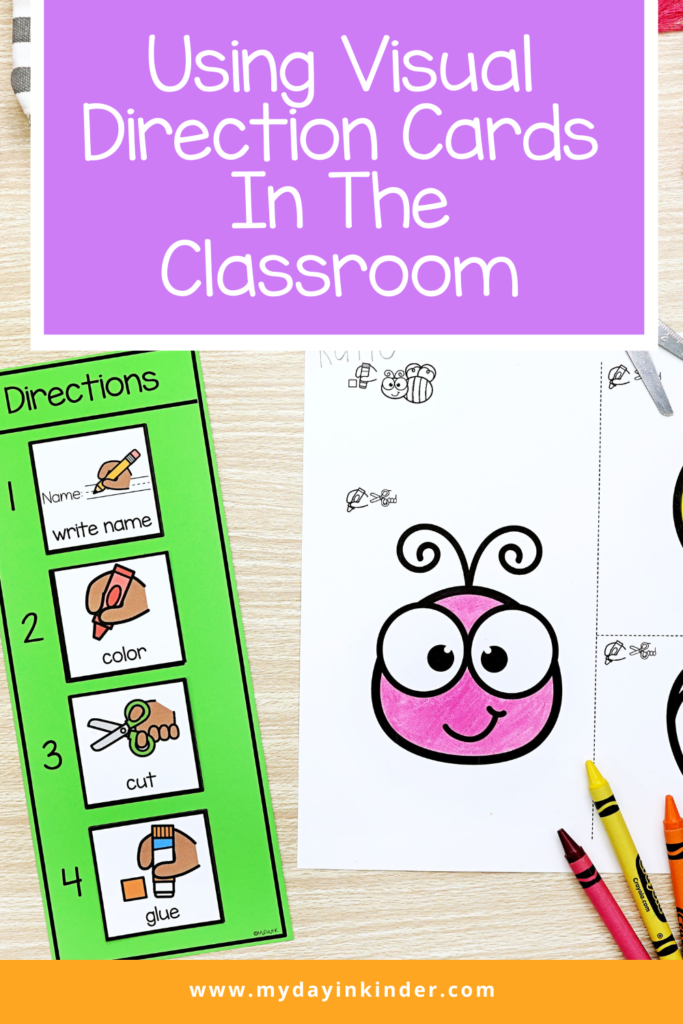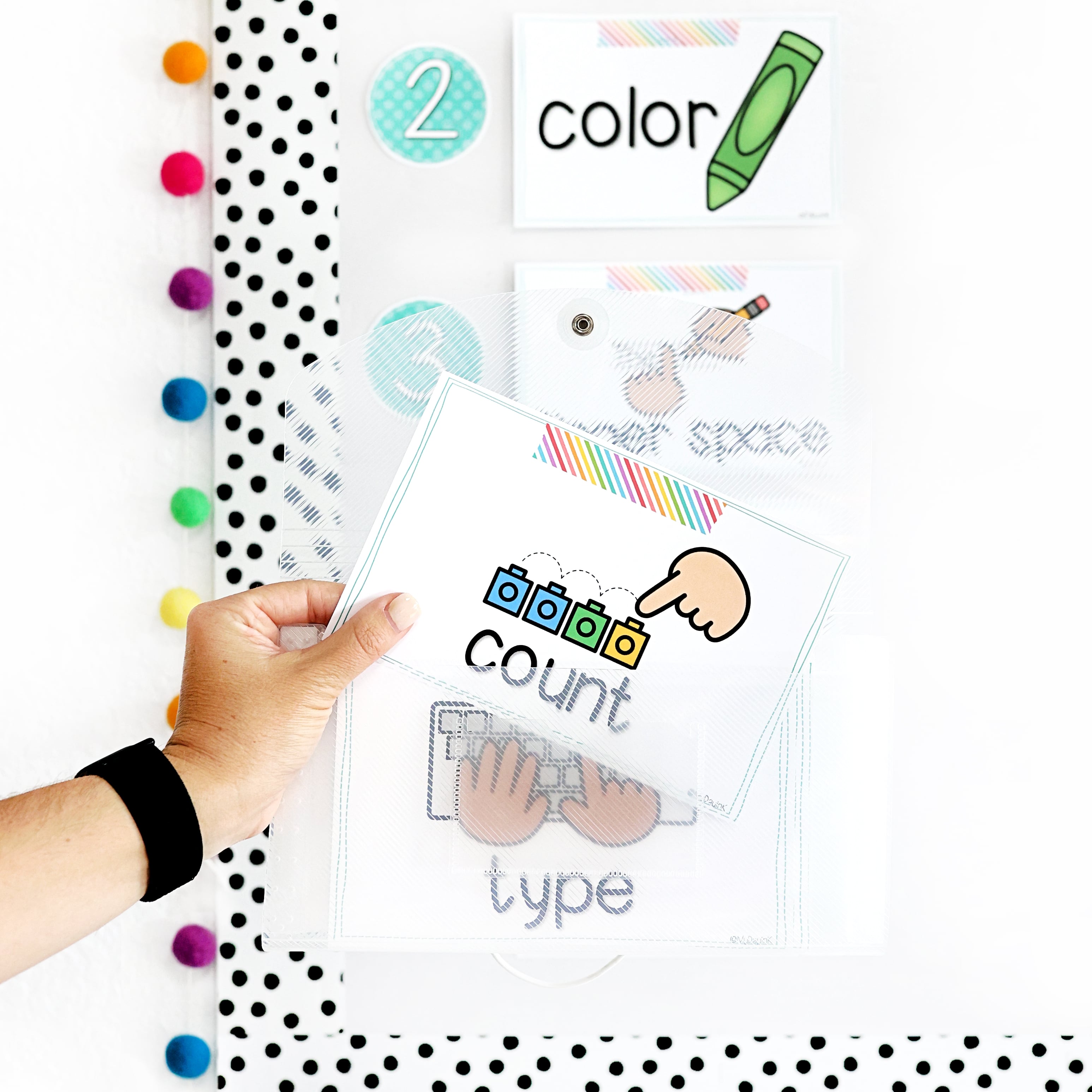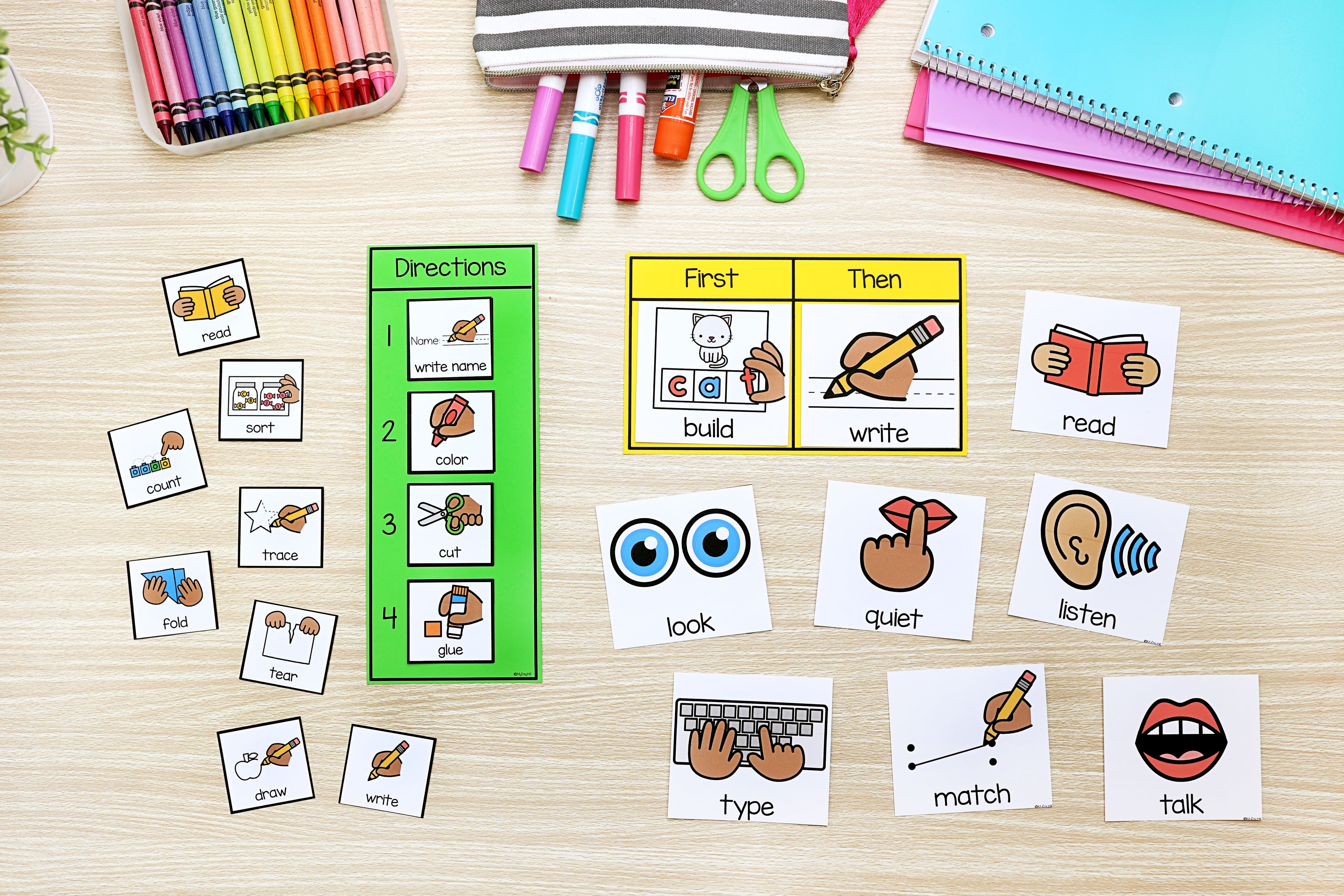Empower Young Minds and Boost Your Classroom Management With Visual Direction Cards
Today, I’ve decided I wanted to dive into a topic that I realize is often talked about but can still be one of the hardest parts of teaching kindergarten. That topic is behavior management. Picture this: a classroom where students confidently navigate tasks with ease and a classroom where you are not repeating directions and wanting to pull your hair out. Well, I can confidently tell you that this classroom can be your reality, all thanks to the magic of visual direction cards.

Teaching primary students, especially kindergarteners, requires an innovative approach to ensure effective communication and comprehension. Many kindergarteners are visual learners during that first year of school. They are eager to explore and absorb knowledge through engaging visuals, and that’s where visual direction cards come into play. By providing clear and concise instructions, these cards can help your classroom management and empower students to take charge of their learning.
The Power of Visual Direction Cards
I’m gonna go a little rogue with this example, so please, stick with me! Imagine your classroom as a stage and your students as the actors. Visual direction cards act as their cues, guiding them through each scene of their learning instructions. These cards not only aid in understanding and following instructions but also promote independence and responsibility. Plus, they make transitions way easier.
Last fall, during a math lesson, I introduced visual direction cards to my kindergarteners. We were exploring addition using colorful counters. Instead of standing in front of the class, endlessly repeating the instructions, I used direction cards. As I held up the “Count” card and told them to “count 5 red counters,” the students eagerly followed along.
Another time during a reading session, I transformed my classroom into Storyland. My direction cards took center stage as I introduced each task, making the experience magical and interactive. As I held up the “Draw” card and told my students to “draw your favorite character” card, the students were ready to use their creativity and imagination.
Using Visual Direction Cards Effectively
Now that we’ve explored the power of these cards through some of my personal stories, I probably should give you some tips for effective implementation:
Display and Accessibility
Create a dedicated board or display area in your classroom where visual direction cards can be easily seen and accessed by students.
Visual Clarity
Use clear, colorful, and engaging visuals on the cards to capture students’ attention and enhance their understanding.
Teach and Practice
Introduce the concept of visual direction cards explicitly. Teach your students how to interpret and follow the instructions using the cards. Practice regularly until it becomes second nature to them.
Editable Options
Utilize editable visual direction cards to customize instructions based on your classroom’s specific needs. Tailor them to suit different subjects and activities or even to address individual student requirements.
As teachers, our goal is to foster independent learners who confidently navigate through instructions, acquiring knowledge along the way. Visual direction cards offer an innovative solution that transforms classroom management, engages young minds, and encourages independent thinking. By incorporating these cards into your teaching repertoire, you’ll witness a classroom brimming with enthusiasm and productivity.
So, don’t wait another moment! Head over to my TPT and discover the array of cards that will revolutionize your classroom. CLICK HERE! Empower your students, enhance your teaching, and create an environment where visual directions pave the way for endless possibilities.
Remember, with direction cards. You’re not just providing directions; you’re igniting a spark of curiosity, creativity, and confidence that will accompany your students on their educational journey, both in and out of the classroom.




